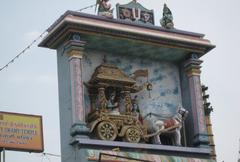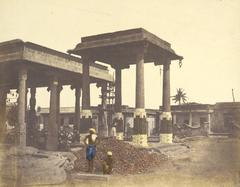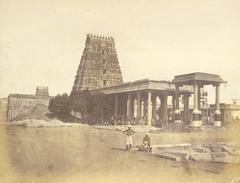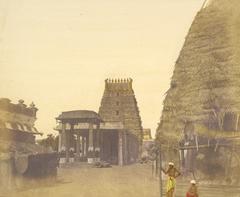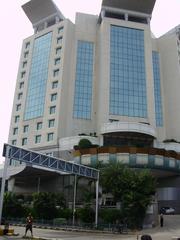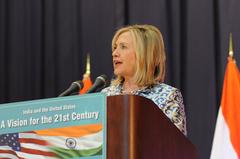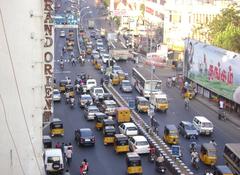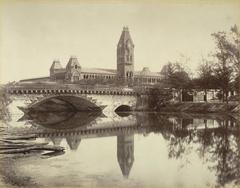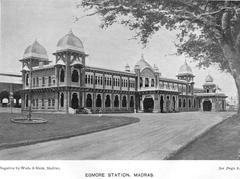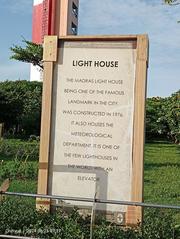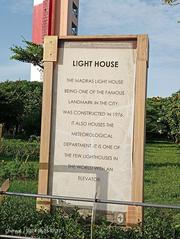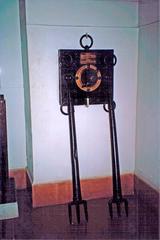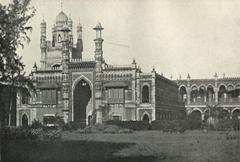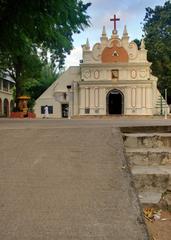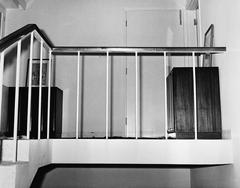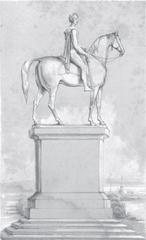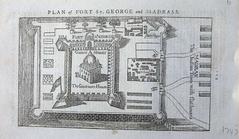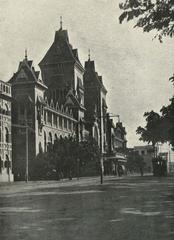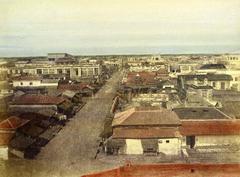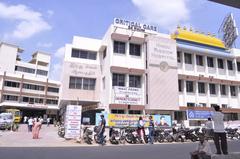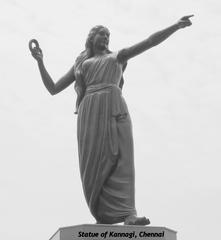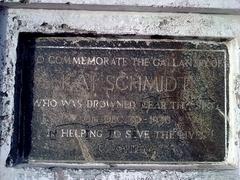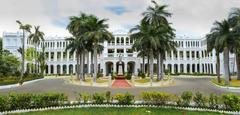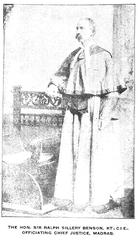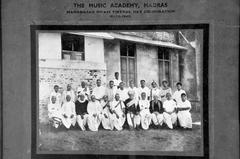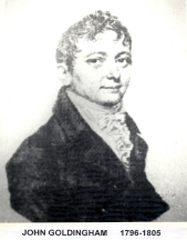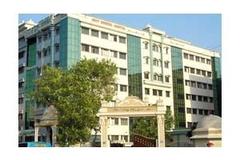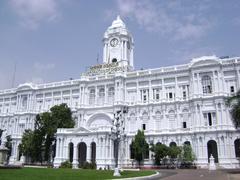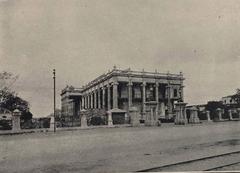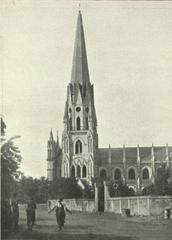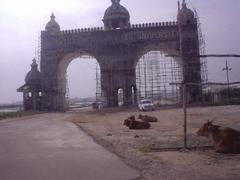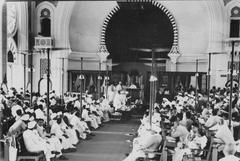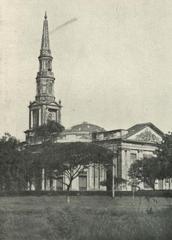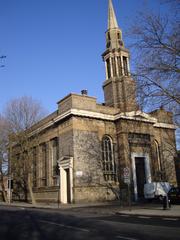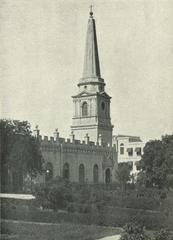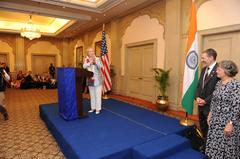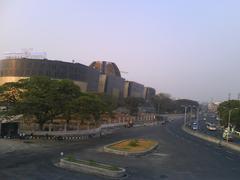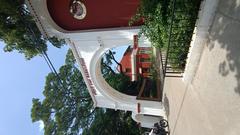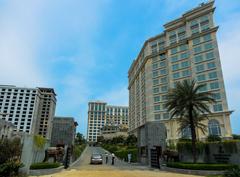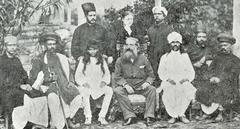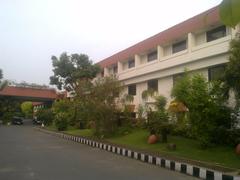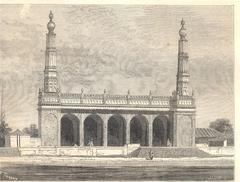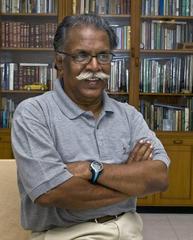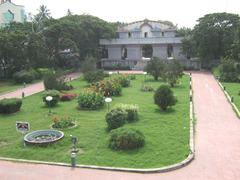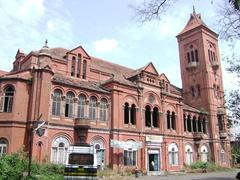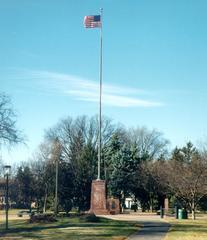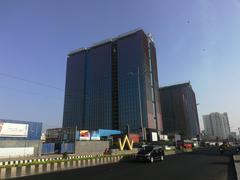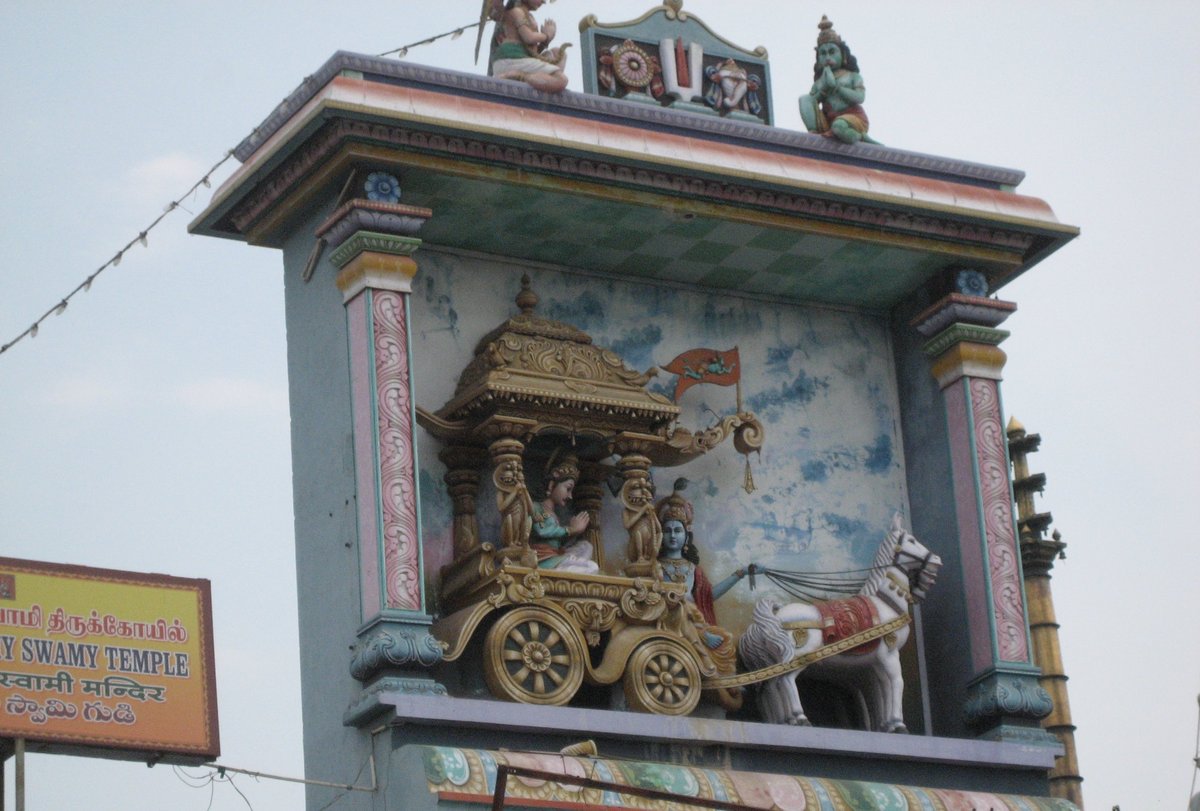
Guide to Visiting Sri Parthasarathy Koil in Chennai
Date: 17/07/2024
Introduction
Sri Parthasarathy Koil, located in Chennai, India, is a significant historical and religious landmark that attracts thousands of visitors each year. This ancient temple, dedicated to Lord Krishna in his role as Parthasarathy—the charioteer of Arjuna from the Mahabharata—boasts a rich history dating back to the 8th century CE. Constructed by the Pallava king Narasimhavarman I, the temple has witnessed the contributions of several dynasties, including the Cholas and Vijayanagara Empire, each leaving their architectural and cultural imprint (Discover the Rich History and Visiting Hours of Sri Parthasarathy Koil in Chennai).
The temple’s significance extends beyond its religious aspects; it played a pivotal role during the Bhakti movement, becoming a center for devotional worship. Additionally, the temple’s inscriptions provide valuable insights into the socio-economic conditions of different eras. Modern-day Sri Parthasarathy Koil continues to be a vibrant hub of festivals and cultural activities, making it an essential visit for history enthusiasts, spiritual seekers, and tourists alike (Exploring Sri Parthasarathy Koil - Visiting Hours, Tickets, and Cultural Significance in Chennai).
This comprehensive guide aims to provide all the essential information you need for visiting Sri Parthasarathy Koil, including its historical background, visiting hours, ticket information, travel tips, and nearby attractions. Whether you’re planning your first visit or returning to deepen your understanding, this guide will enrich your experience of this iconic temple.
Table of Contents
- Introduction
- History of Sri Parthasarathy Koil
- Notable Events and Festivals
- Visitor Information
- Preservation and Conservation Efforts
- Conclusion
- FAQ
History of Sri Parthasarathy Koil
Origins and Early History
Sri Parthasarathy Koil, located in Chennai, India, is one of the oldest temples in the region, with its origins tracing back to the 8th century CE. The temple is dedicated to Lord Krishna, who is worshipped here in his role as Parthasarathy, meaning the charioteer of Arjuna, a central character in the Indian epic, the Mahabharata. The temple was constructed by the Pallavas, a dynasty known for their patronage of art and architecture. The Pallava king, Narasimhavarman I, is credited with the initial construction of the temple, which was later expanded by subsequent dynasties, including the Cholas and the Vijayanagara Empire.
Architectural Evolution
The architectural style of Sri Parthasarathy Koil is a testament to the Dravidian architectural tradition. The temple complex has undergone several renovations and expansions over the centuries, reflecting the contributions of various dynasties. The original structure built by the Pallavas was relatively modest, but it laid the foundation for future enhancements. The Cholas, who ruled from the 9th to the 13th centuries, added significant features, including the towering gopurams (gateway towers) and intricate carvings that are characteristic of their architectural style. The Vijayanagara rulers, who came to power in the 14th century, further embellished the temple with additional shrines and mandapams (pillared halls).
Historical Significance
Sri Parthasarathy Koil holds immense historical significance, not just as a religious site but also as a cultural and social hub. The temple has been a focal point for various religious and cultural activities over the centuries. It has hosted numerous festivals, rituals, and ceremonies that have drawn devotees from far and wide. The temple’s inscriptions, some of which date back to the 8th century, provide valuable insights into the socio-economic conditions of the time. These inscriptions, written in Tamil and Sanskrit, record donations made by kings, queens, and commoners, highlighting the temple’s role as a center of economic and social life.
Role in the Bhakti Movement
The Bhakti movement, which swept across South India between the 7th and 9th centuries, had a profound impact on the history of Sri Parthasarathy Koil. The temple became a significant center for the propagation of Bhakti, or devotional worship, which emphasized a personal and direct relationship with the divine. Several Alvars, the poet-saints of the Bhakti movement, composed hymns in praise of Lord Krishna at this temple. The most notable among them is Thirumangai Alvar, whose verses are still recited during temple rituals. The Bhakti movement not only enriched the religious life of the temple but also contributed to its architectural and artistic heritage.
Colonial Era and Modern Developments
During the colonial era, Sri Parthasarathy Koil continued to be a prominent religious site, although it faced challenges due to changing political and social conditions. The British colonial administration, while generally tolerant of religious practices, imposed certain restrictions and taxes that affected temple activities. Despite these challenges, the temple managed to preserve its traditions and continued to attract devotees.
In the post-independence era, the temple has seen significant developments aimed at preserving its heritage and accommodating the growing number of visitors. The Tamil Nadu government, along with various religious and cultural organizations, has undertaken several restoration projects to maintain the temple’s structural integrity and artistic beauty. Modern amenities have been added to enhance the visitor experience, including improved access, lighting, and sanitation facilities.
Notable Events and Festivals
Sri Parthasarathy Koil is renowned for its vibrant festivals, which are deeply rooted in its historical and cultural traditions. The most significant festival is the Brahmotsavam, a grand 10-day event held annually in the Tamil month of Chithirai (April-May). This festival, which dates back several centuries, features elaborate processions, traditional music and dance performances, and various religious rituals. Another important festival is Vaikunta Ekadasi, celebrated in December-January, which attracts thousands of devotees who come to witness the opening of the ‘Vaikunta Dwaram’ or ‘Gate to Heaven.‘
Visitor Information
Visiting Hours
Sri Parthasarathy Koil is open to visitors every day. The visiting hours are as follows:
- Morning: 6:00 AM to 12:00 PM
- Evening: 4:00 PM to 9:00 PM
Ticket Prices
There is no entry fee to visit Sri Parthasarathy Koil. However, donations are welcomed and can be made at the temple premises.
Travel Tips
- Best Time to Visit: The best time to visit the temple is during the early morning or late evening to avoid the crowd and heat.
- Dress Code: Visitors are expected to dress modestly. Traditional Indian attire is preferred.
- Photography: Photography is generally allowed, but it is advisable to check with the temple authorities for any restrictions.
Nearby Attractions
- Marina Beach: One of the longest urban beaches in the world, located just a few kilometers from the temple.
- Kapaleeshwarar Temple: Another ancient temple dedicated to Lord Shiva, located nearby.
- Fort St. George: A historical fort built by the British, now housing a museum.
Preservation and Conservation Efforts
The preservation of Sri Parthasarathy Koil’s rich history and architectural heritage is a continuous effort. The Archaeological Survey of India (ASI) and other heritage conservation bodies have been actively involved in maintaining the temple’s structural and artistic elements. Recent conservation projects have focused on restoring the temple’s intricate carvings, frescoes, and inscriptions, ensuring that they remain intact for future generations. These efforts are crucial in preserving the temple’s historical legacy and its significance as a cultural and religious landmark.
Conclusion
Sri Parthasarathy Koil stands as a testament to the rich historical, cultural, and religious heritage of Chennai. From its ancient origins to its vibrant festivals, the temple continues to be a beacon of devotion and tradition. Whether you are a history enthusiast, a spiritual seeker, or a curious traveler, a visit to Sri Parthasarathy Koil promises a rewarding experience.
For more detailed information on the history and significance of Sri Parthasarathy Koil, you can visit the official website of the temple or refer to scholarly articles available on JSTOR.
FAQ
- What are the visiting hours of Sri Parthasarathy Koil?
- The temple is open from 6:00 AM to 12:00 PM in the morning and 4:00 PM to 9:00 PM in the evening.
- What is the ticket price for Sri Parthasarathy Koil?
- There is no entry fee, but donations are welcomed.
- Are there any special events or festivals at Sri Parthasarathy Koil?
- Yes, the Brahmotsavam and Vaikunta Ekadasi are among the major festivals celebrated at the temple.
- What are some nearby attractions to Sri Parthasarathy Koil?
- Marina Beach, Kapaleeshwarar Temple, and Fort St. George are some nearby attractions.
